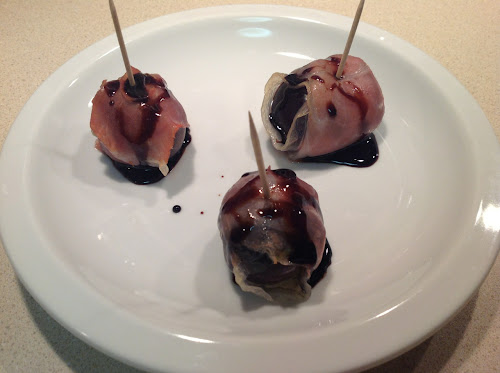Washington Post
1) “Pick Up Artist,” by Bonnie S. Benwick. Rotisserie chicken is big business for grocery stores these days. Benwick and team took an America’s Test Kitchen approach to sampling 14 local examples of the roasted bird, noting their taste, the store’s policy for how long unsold birds are left on the shelf and also how stores may reuse the chicken they don’t sell. Not into rotisserie chicken myself, but I enjoyed the article. Sounds like Costco might be the bird to beat. Includes a nice sidebar with pictures and descriptions of all chickens sampled.
2) “Frightening heat, at a farmers market near you,” by Tim Carman. Another thing I’m not into is super hot chili peppers. Really, who is? Apparently a select few, who approach eating such peppers like a sport. Carman, bless his heart, dives in with the best of them and artfully describes sampling a ghost pepper, which is about 200 times spicier than a jalapeño. If you’ve ever eaten something too hot—or watched someone else do it—you’ll appreciate this a lot.
3) “Roasted Butternut Squash and Chickpeas,” Nourish recipe by Stephanie Witt Sedgwick. Doesn’t that sound like an interesting combination? I’d really like to try this. I particularly like how Sedgwick describes the roasted chickpeas as becoming toasty and slightly dried like snack food. Yummy.
4) “Citra, hop of the moment,” Beer column by Daniel Fromson. We’re really big fans of hoppy beer in our house, so I appreciated Fromson’s column on how different hops come into fashion, with the Citra, the hop of-the-moment, appearing in some local brews.
5) “Barefoot and (almost) foolproof," Book Report by Bonnie S. Benwick. You might be surprised to learn that I don't really watch cooking shows. Apart from Top Chef, I don't make a point of watching them, although I do occasionally tune it to see what America's Test Kitchen or Jacques Pepin are up to (and years ago I was a Rachael Ray devotee, but not these days). So I'm not a Barefoot Contessa fan, but her new cookbook sounds interesting. I'm intrigued by Benwick's description of her recipes being written in a minimal style but usually with an important detail. Sounds like good food writing.
New York Times
1) “The Once and Future Spago,” by Adam Nagourney. The Times’ lead story is a thoughtful profile of Wolfgang Puck, the California-centric chef who resides at the helm of a major food empire that includes restaurants all over the country (including D.C.’s The Source), fast food outlets in major airports and even a grocery brand. Wolfgang Puck was one of the first chefs I knew by name whose food I really wanted to try. I remember how excited I was when I got to eat at Spago in 2000. I'm pleased to read that Puck, who just completed a redesign of Spago Beverly Hills, is still going strong.
2) “A Different Shade of Risotto,” How to Cook Everything column by Mark Bittman. Just about every recipe I’ve seen for risotto calls for Arborio rice, so it was refreshing to see Bittman experiment successfully with using brown rice. His Brown Rice Risotto with Winter Squash sounds like a healthy take on the dish, which omits much of the butter and cheese that make risotto heavy.
3) “Carrots Develop a Meatier Reputation,” by Florence Fabricant. After learning that Eleven Madison Avenue now serves a carrot tartare, clearly carrots place on the culinary landscape is evolving. Fabricant examines how chefs are gaining a new appreciation for the common root vegetable.
4) “They’re Eating Out of the Palm of His Hand,” by Adam Nagourey. I’ve been wondering about this and got my answer: Jose Andres does indeed have a presence in Las Vegas. Two in fact: a fourth branch of his Spanish tapas concept, Jaleo, and a super-secret cousin of Minibar called é. Nagourey describes it as being like a speakeasy, and that sounds pretty accurate. The restaurant does not appear on Andres’ Think Food Group website. It serves dishes inspired by Spain and molecular gastronomy; Andres describes it as being like Minibar but easier for people to understand. And of course its eight seats are sold out every night.
5) “Neighbors Won’t Give Candy Like This,” A Good Appetite column by Melissa Clark. Halloween candy isn’t just for kids, especially in the hands of Clark, who whips up a slate of adult-oriented candy, including Almond and Goat Cheese Candy Bars and Black Pepper and Bourbon Caramel Chews.
Verdict
The New York Times. It’s really close this week—lots of great stories in both publications. I’m giving the Times a slight edge for their Puck profile, brown rice risotto and carrots. Plus, I think they should get some credit for putting out such a great section during the week Sandy ravaged the city, which was hit far worse than D.C.
Score
The Washington Post: 22
The New York Times: 20




























.JPG)
